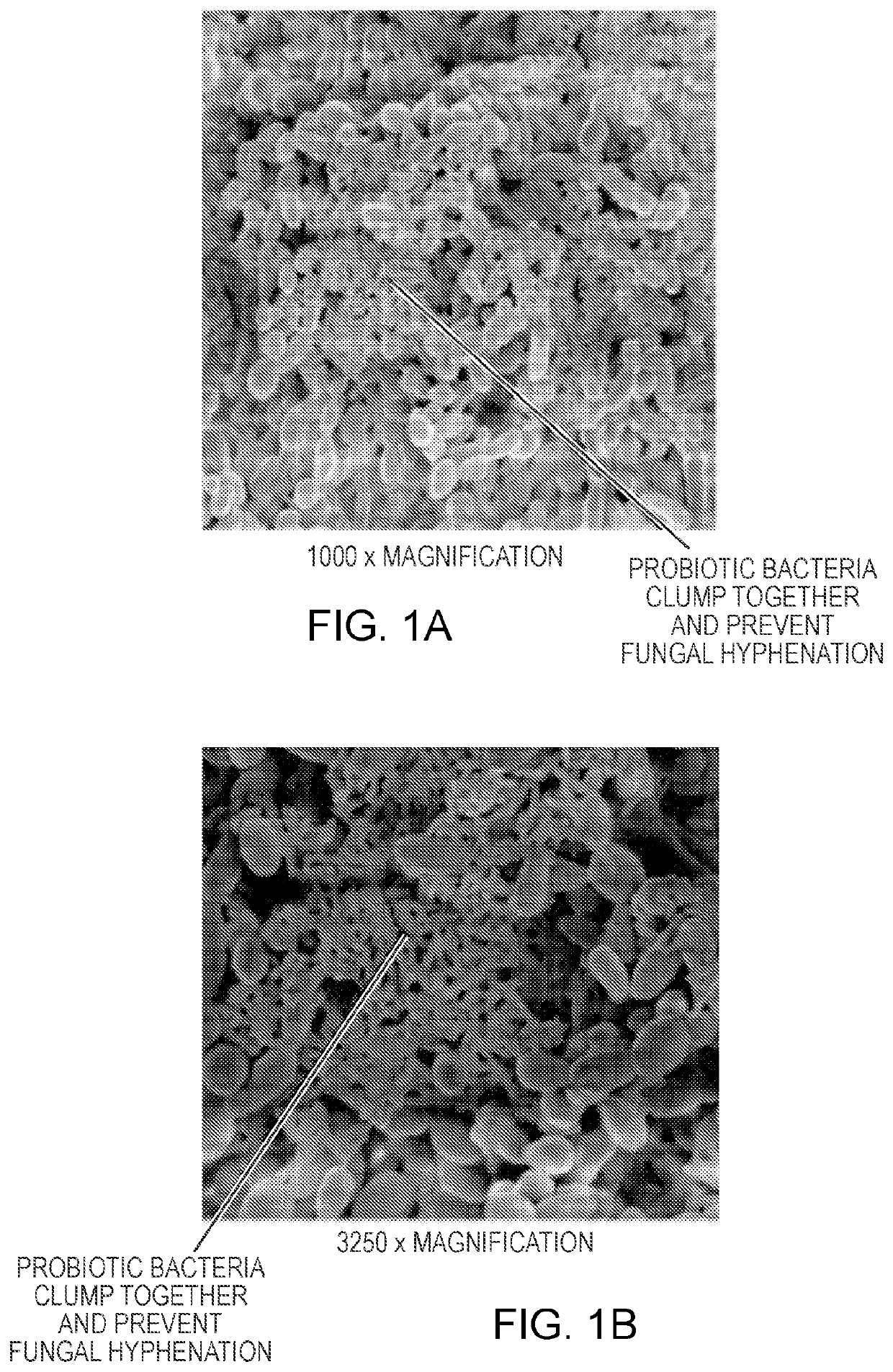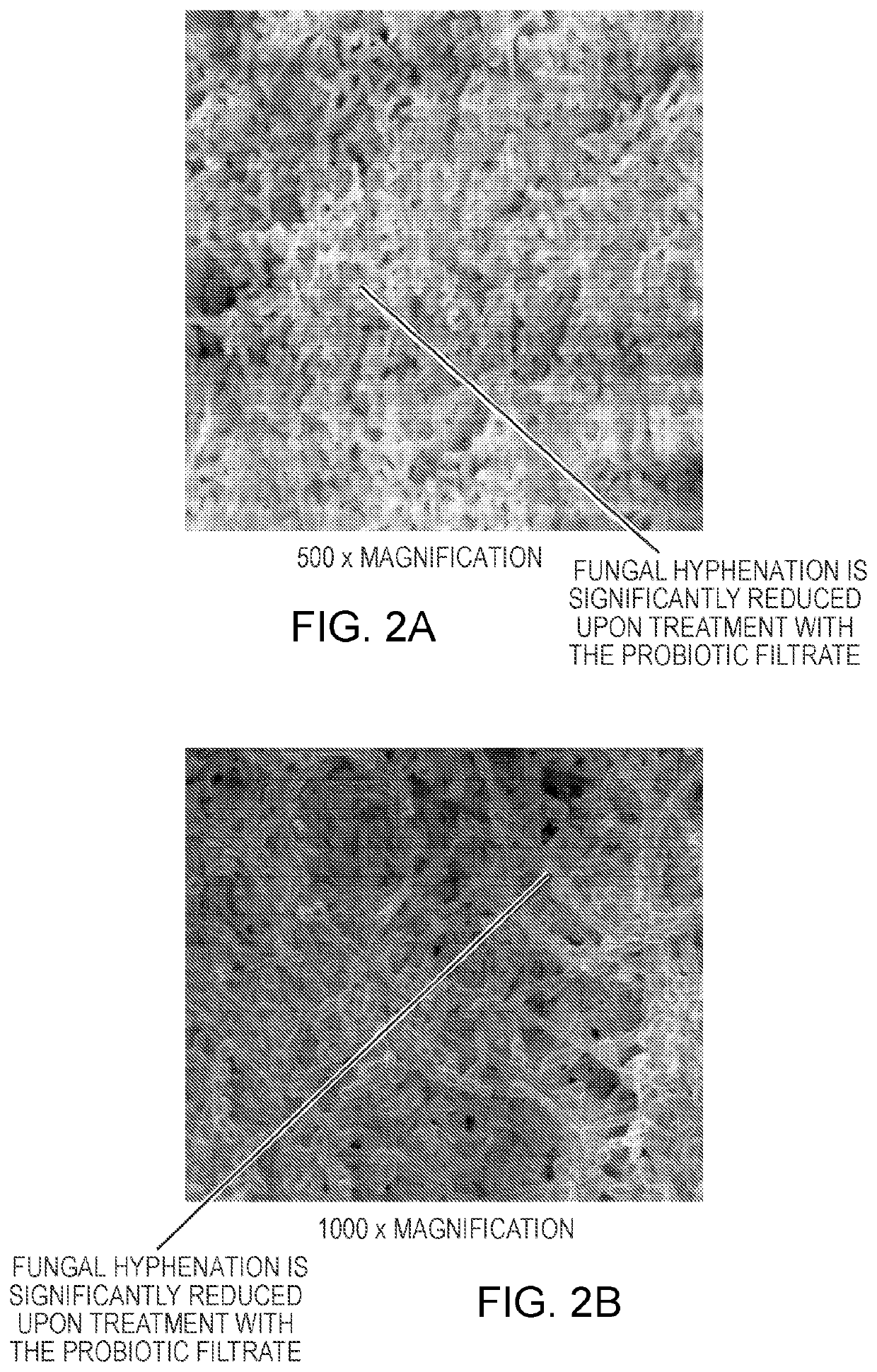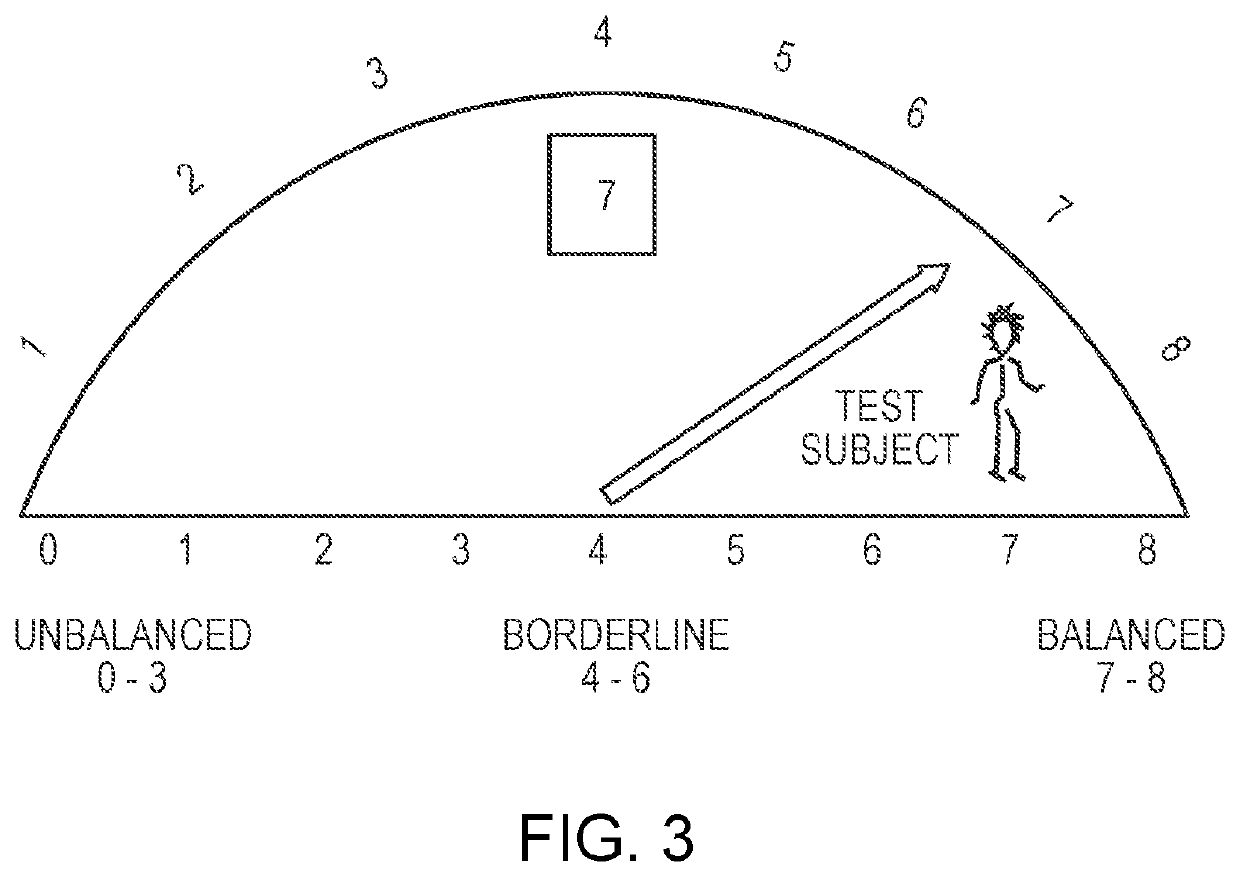Compositions and methods for promoting a healthy microbial flora in a mammal
a technology of microbial flora and composition, applied in the field of composition and methods for promoting a healthy microbial flora in a mammal, can solve the problems of unbalanced biofilms, difficult to treat, and inability to achieve the effects of preventing the filamentation of pathogenic fungi, reducing growth and/or development, and reducing the effect of bacterial growth
- Summary
- Abstract
- Description
- Claims
- Application Information
AI Technical Summary
Benefits of technology
Problems solved by technology
Method used
Image
Examples
example 2
n of a Biofilm Comprising Pathogenic Organisms with a Composition Comprising Non-Pathogenic Bacterial and Fungal Strains, and an Enzyme
[0194]In this Example, a composition of four non-pathogenic microbial strains, Lactobacillus rhamnosus, Lactobacillus acidophilus, Bifidobacterium breve, Saccharomyces boulardii (“the probiotic strains”) and an enzyme is used to disrupt a biofilm formed by the pathogenic microorganisms Candida tropicalis, Escherichia coli, and Serratia marcescens.
[0195]The probiotic strains are grown as described in Example 1. The probiotic strains is collected from the supernatant or the cell pellets obtained after centrifugation. An enzyme (e.g., amylase), is added to the pellet and the resulting enzyme containing composition is stored at −20° C. until use. Amylases added to the composition may be Bacillus slearolhermophilus amylase, Bacillus amyloliquefaciens amylase, Bacillus subtilis amylase, Bacillus licheniformis amylase, Aspergillus niger amylase, and / or Asp...
example 3
Identifying a Test Subject Suitable for Treatment
[0198]This Example describes a method of identifying whether a test subject is suitable for treatment with a dosage form described herein.
[0199]The number or density of the non-pathogenic bacterial strains and the non-pathogenic fungal strains are measured and quantified from the harvested sample. Examples of non-pathogenic bacteria that are quantified include Lactobacillus rhamnosus, Lactobacillus acidophilus, and Bifidobacterium breve. Examples of non-pathogenic fungi that are quantified include Saccharomyces boulardii and Saccharomyces cerevisiae.
[0200]The number or density of non-pathogenic microorganisms quantified in the sample of the candidate subject is then compared against the number or density of corresponding organisms in a corresponding sample size of a corresponding region of a healthy subject. In cases when the number or density of one of the organisms in the sample from the test subject is less than the number or dens...
example 4
f Probiotic Consumption on the Bacteriome and Mycobiome
[0202]In this Example, a slow food cohort (SFC) received probiotic capsules, referred to herein as BIOHM capsules, and the effect on the bacteriome and mycobiome profiles of the cohort subjects were analyzed. The BIOHM capsule for once per day administration comprises hydroxypropylmethylcellulose (HPMC)-coated powder that contains about 15 billion colony forming units of Bifidobacterium breve, about 1.5 billion colony forming units of Lactobacillus acidophilus, about 10 billion colony forming units of Lactobacillus rhamnosus, and about 3.5 billion Saccharomyces boulardii, and admixed with about 500 SKB units of amylase.
[0203]Fecal samples were collected from a slow food cohort (SFC) (n=21) before (baseline) and after receiving one BIOHM capsule per day for four weeks. The collected samples were analyzed for levels of their bacterial communities using Ion-Torrent sequencing platform (Thermo Fisher). Pre- and Post-BIOHM data were ...
PUM
| Property | Measurement | Unit |
|---|---|---|
| Mass | aaaaa | aaaaa |
| Mass | aaaaa | aaaaa |
| Mass | aaaaa | aaaaa |
Abstract
Description
Claims
Application Information
 Login to View More
Login to View More - R&D
- Intellectual Property
- Life Sciences
- Materials
- Tech Scout
- Unparalleled Data Quality
- Higher Quality Content
- 60% Fewer Hallucinations
Browse by: Latest US Patents, China's latest patents, Technical Efficacy Thesaurus, Application Domain, Technology Topic, Popular Technical Reports.
© 2025 PatSnap. All rights reserved.Legal|Privacy policy|Modern Slavery Act Transparency Statement|Sitemap|About US| Contact US: help@patsnap.com



